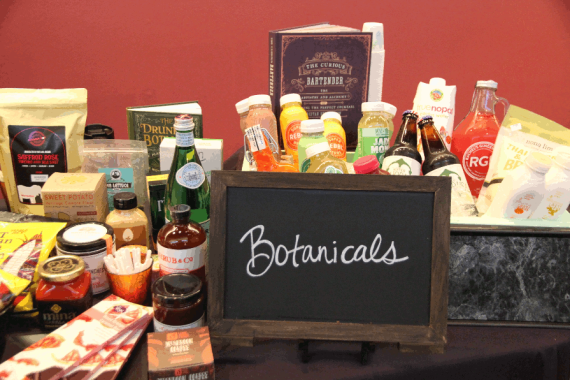 According to the masters at Forbes, spotting trends in food and beverage ingredients is both an art and a science. At a recent Hartman Group anthropology culture and trends symposium (Hartman A.C.T. Events) both art and science crossed paths to demonstrate just what those latest trends are and how they are determined. One of the trends they noted was the use of botanicals, or if you are unfamiliar with the word, a substance obtained from a plant and used as an additive. According to the professionals at the A.C.T. Health & Wellness 2015 event consumers see botanicals as known ingredients, offering a “back to nature” approach to promoting wellness. As artificial flavors and colors continue to decline in popularity, consumers are increasingly open to the novel, fresh, seasonal and bright flavors of botanicals as a flavor in beverages ranging from cocktails and craft beer and all other drinks in between. Driven by chefs, mixologists and the modern juice category, botanicals are being included for flavor, discovery and functional benefits.
According to the masters at Forbes, spotting trends in food and beverage ingredients is both an art and a science. At a recent Hartman Group anthropology culture and trends symposium (Hartman A.C.T. Events) both art and science crossed paths to demonstrate just what those latest trends are and how they are determined. One of the trends they noted was the use of botanicals, or if you are unfamiliar with the word, a substance obtained from a plant and used as an additive. According to the professionals at the A.C.T. Health & Wellness 2015 event consumers see botanicals as known ingredients, offering a “back to nature” approach to promoting wellness. As artificial flavors and colors continue to decline in popularity, consumers are increasingly open to the novel, fresh, seasonal and bright flavors of botanicals as a flavor in beverages ranging from cocktails and craft beer and all other drinks in between. Driven by chefs, mixologists and the modern juice category, botanicals are being included for flavor, discovery and functional benefits.
So where can you find these wellness enthused alcohols?
Well at Long Island Spirits, distillery customers can find what is a common botanical induced alcohol, gin. This Deep Wells Botanical Dry Gin is a “complex melange of botanicals, including juniper, coriander, lavender, citrus zest and lemon grass. The palate is bold and assertive with sharp citrus zest notes in the lead on a viscous bed of decadent spirit.” F. Paul Pacult, Ultimate Spirits Challenge 2015
The Chase Distillery in the UK has a slew of recipes rich with earth undertones brought out by botanical flavors in their gin and vodka. The Mint Tulip—a mix of Chase Sloe gin, Drambuie, and mint served over crushed ice and garnished with fresh tulips—is a beautiful twist on a classic cocktail and brings you in tune with floral side just in time for April.

